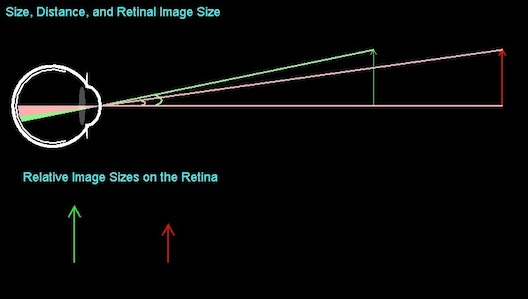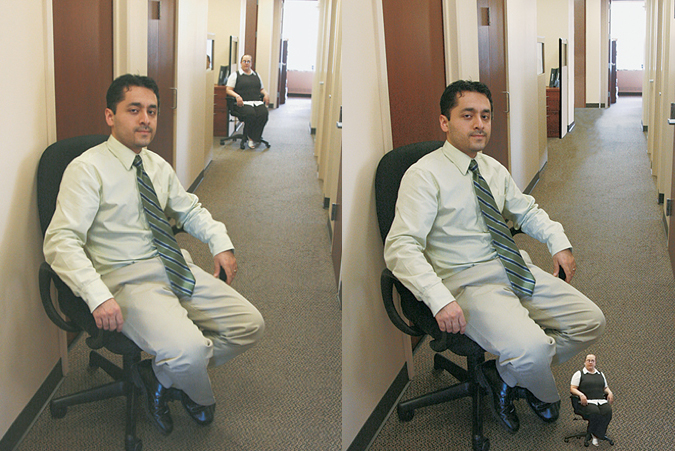Chapter 1. Size Constancy
1.1 Introduction
Size Constancy
As an object gets farther away from us, the size of the image of that object on the retina shrinks. Take a look at the figure below.

The two arrows at the top of the figure are exactly the same size, but the more distant arrow will cast a smaller image on the retina, as indicated by the two arrows at the bottom of the figure (drawn to the relative sizes of their images on the retina).
If we saw the world in a way that depended upon the retinal image size, your friends would shrink rapidly as they walked away from you. Their height would halve with each doubling of distance. At 4 feet, they would appear to be half the size or 2 feet. Take a look at the following photograph.

Fortunately, this photograph does not illustrate the way we view the world. We have size constancy, which is the perception that objects stay about the same size despite their different distances from us and the different retinal images they cast. Our depth perception plays a critical role in size constancy and this experiment will illustrate that.
References:
Boring, E. G. (1964). Size constancy in a picture. The American Journal of Psychology, 77(3), 494-498.
Holway, A. H., & Boring, E. G. (1941). Determinants of apparent visual size with distance variant. The American Journal of Psychology, 54, 21-37.
1.2 Experiment Setup

1.3 Instructions
Instructions
You will be asked to adjust the size of the figure on the right so that it appears to be exactly the same size as the figure on the left. When the figures look to be the same size, press the Match button to move to the next trial.
Keyboard Responses
| Key | What Response Means |
|---|---|
| + or = | Increase the size of the left figure |
| - (minus sign) | Decrease the size of the right figure |
1.4 Experiment
Begin Experiment

1.5 Results
Results

1.6 Quiz
Quiz